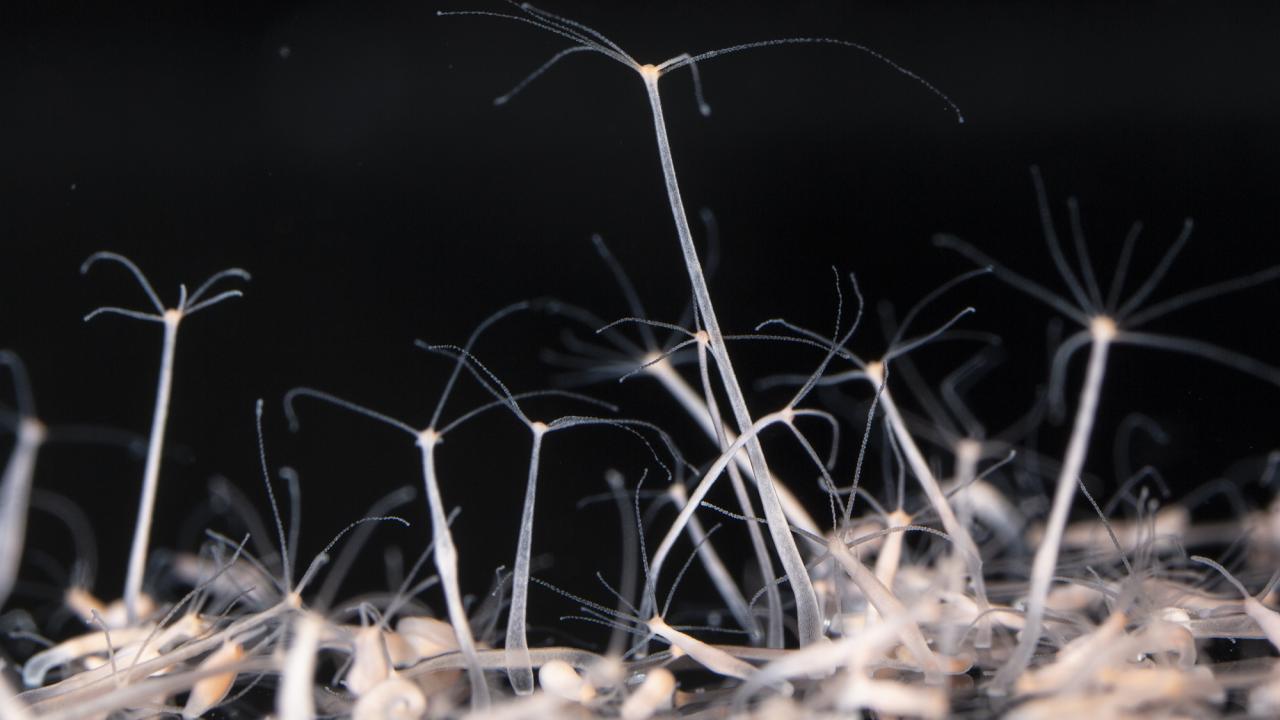The Greek hero Heracles fought a monster called the Hydra, which grew two new heads for each one he lopped off. Heracles was lucky he wasn’t fighting something with the regenerative ability of the real Hydra, which can re-grow its entire body from a few hundred cells. This simple water animal is helping scientists explore how some animals can regrow missing body parts.
Like its mythical counterpart, the real Hydra lives in water, but is tiny and harmless. It’s essentially a hollow tube with a single opening to bring in food and expel waste, and a crown of stinging tentacles.
“It has this amazing regenerative ability, it can regrow its entire body in about two days,” said Celina Juliano, associate professor of molecular and cellular biology in the UC Davis College of Biological Sciences.
Juliano’s lab studies Hydra as a model system for understanding tissue regeneration. This ability is actually pretty widespread in the animal kingdom, she said.
“It varies from simple wound healing to being able to regrow whole limbs to regenerating a whole body,” Juliano said. Our bodies can heal a cut or wound, especially when we are young; but we can’t regrow a lost finger, while a salamander can regrow a whole leg. Because this ability is so widespread across different types of animals and hundreds of millions of years of evolution, the genes that allow for regeneration are likely conserved. What makes a difference is how they are organized into networks and turned on and off.
Lab model of regeneration
The most common lab animals, e.g. mice and fruit flies, are not good regenerators. So Juliano’s lab and others has been working to set up the tools to study Hydra. The animals have just 25 cell types, all descended from a small set of stem cells. In 2019, Juliano and collaborators published a detailed map of the fate of all of Hydra’scells, from stem cell to final tissue.
In a new paper published Jan. 13 in Genome Research, they use a variety of modern molecular tools to describe the transcription factors that regulate genetic networks in Hydra.
Transcription factors recognize specific sequences of the genome and turn other genes on or off, up or down. In this way, the network can be tweaked to grow new tissues.
With this knowledge, researchers can now study these gene networks and how they work, Juliano said.
“We can look at everything all at once,” she said.
Coauthors on the paper are: at UC Davis, Jack Cazet, Stefan Siebert, Hannah Morris Little and Abby Primack; Philip Bertemes, Peter Ladurner, Matthias Achrainer and Bert Hobmayer, University of Innsbruck, Austria; Mark Fredriksen, R. Travis Moreland, Sumeeta Singh, Suiyuan Zhang, Tyra Wolfsberg and Andreas Baxevanis, National Human Genome Research Institute, Bethesda; Christine Schnitzler, University of Florida; and Oleg Simakov, University of Vienna. The work was supported in part by grants from the National Institutes of Health as well as the Austrian Science Fund and the Deutsche Forschungsgemeinschaft.
